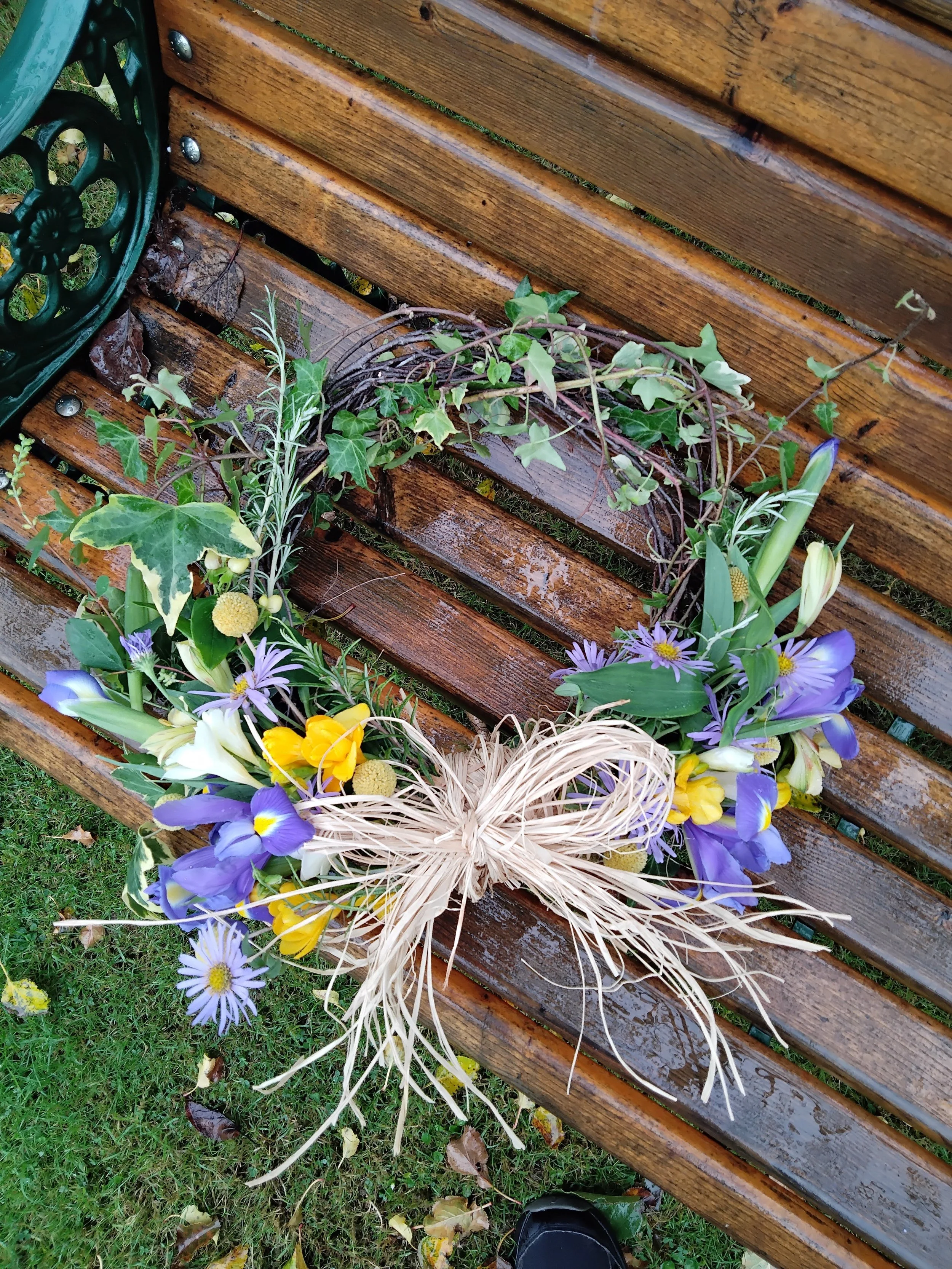A florist’s reflections on colour, comfort, and the magic of the season
As the days grow shorter and the air turns crisp, autumn reminds us to pause, reflect, and gather close with the people who matter most. Just like the turning leaves, flowers take on deeper meaning this time of year—whether they’re offered in sympathy at a funeral, arranged for a wedding, or simply placed on the table to brighten a cozy evening. Choosing the right blooms in autumn isn’t just about colour and seasonality—it’s about capturing the emotions we want to share.
There’s something comforting about the transition from summer into autumn—the dappled sunlight that still carries a touch of warmth, only to give way to a coolness that reminds us the seasons are shifting. Autumn has always been one of my favourite times of year, not only from a florist’s point of view, but also on a personal level. There’s a certain magic in walking through crunchy leaves with a dog trotting by your side. It’s almost a form of mindfulness: noticing nature, being in it, and appreciating the beauty of our country, even when the wider world feels chaotic.
And then, of course, there are the flowers. Don’t you just love the tones of this season? The rusty oranges of dahlias and chrysanthemums, hydrangeas as they transform from soft summer pinks and blues into sage greens and deep reds. One of my favourite—though often underrated—flowers is the gladiolus. Majestic in height and breathtaking as its petals unfurl, it offers apricot tones, vibrant reds, and the occasional pop of yellow. Though they may be nearing the end of their season, their colours feel especially precious while they last.
While we often associate wreaths with Christmas, I think autumn wreaths are just as worthy of a place in our homes—whether hung outdoors to greet visitors or displayed indoors to bring seasonal warmth. I love to create them with not only flowers, but also dried seed heads, pods, grasses, and vines. It’s the perfect way to use materials from garden cutbacks, making arrangements both sustainable and beautifully unique.
If you’re choosing flowers for a friend—or even as a funeral tribute—autumn’s palette brings comfort. Its rich, colourful tones are more than just seasonal beauty; they’re a warm reminder that we care.



















































